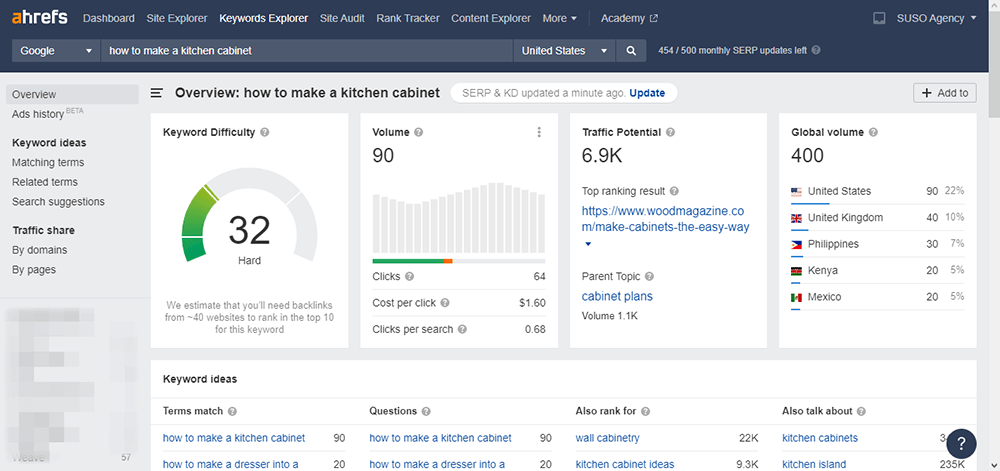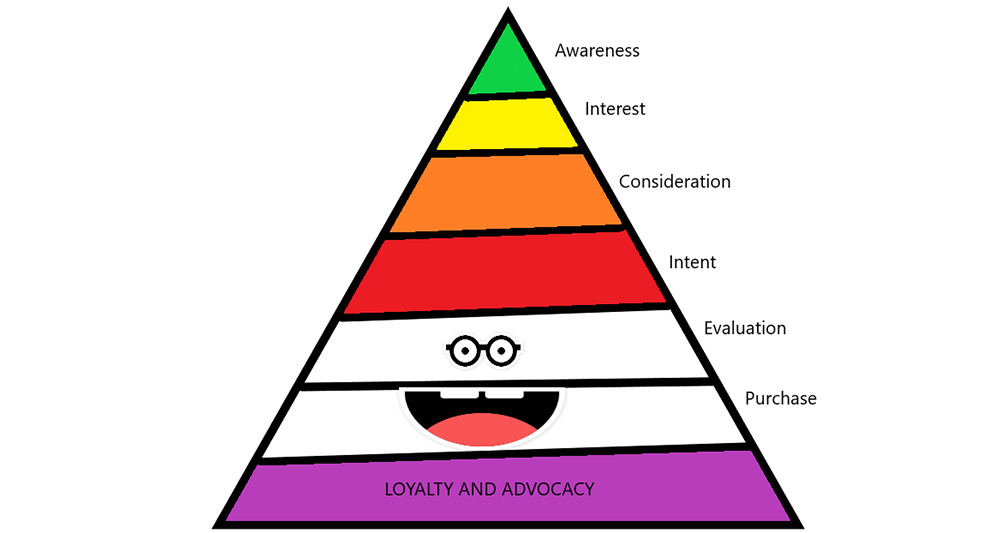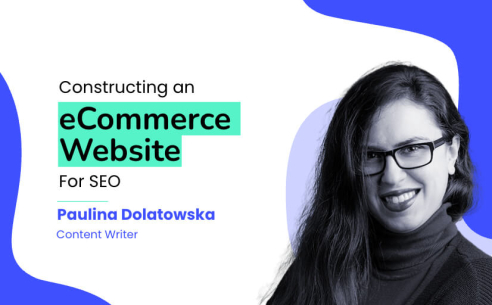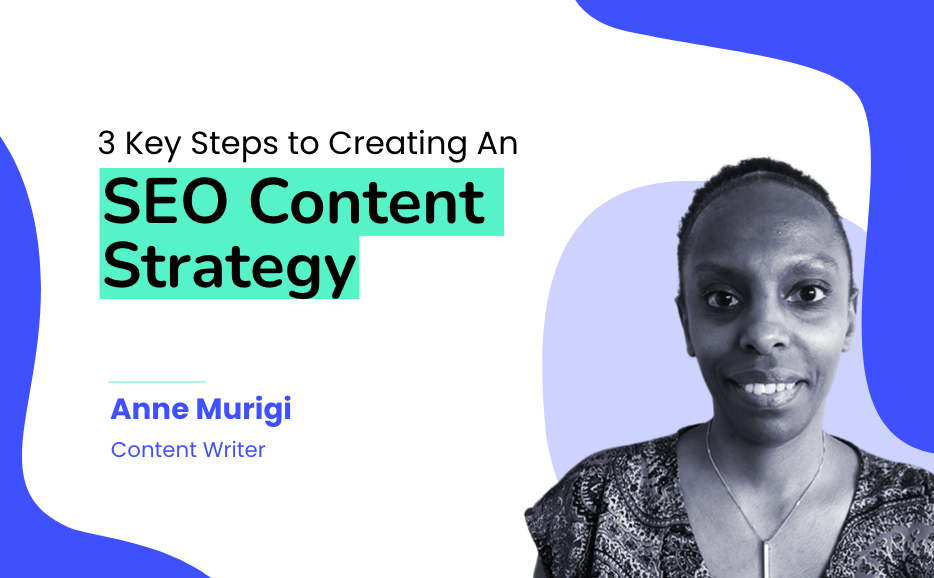Follow our three key steps to creating an SEO content strategy that is designed to convert organic visitors to customers.
3 Key Steps to Creating An SEO Content Strategy
Author: Anne Murigi, Content Writer

Introduction
Content is one of the core pillars of SEO, and without a solid content strategy, no SEO campaign is complete. Think of it like throwing a party: if you throw a kick-ass party, people are going to want to come back for future parties.
But if you throw an awful party, no matter how many people show up, they’re not going to have fun and they’re not going to come back. Not only that, they’ll talk about how bad it was with their friends and make sure they never go to any of your parties again.
The same goes for your website. If you’ve got great content that’s optimised for search engines, people will find it, love it and share it. In order to do this, you need to have a solid SEO content strategy.
In this article, I’m going to discuss what an SEO content strategy is, why you need one, and the key steps to creating one.
The Basics
What is an SEO Content Strategy?
An SEO content strategy is a plan for what kind of content will be created and shared to drive traffic and engagement to your website. It’s often used to describe the content you create for search engine optimization (SEO), but it can also include content that you make for other purposes, such as social media marketing or email campaigns.
Content can be an image, video, text, audio, or interactive tool. It generally includes everything from words on your website to graphics on your social media channels, and it’s what helps you stand out from the crowd.
Think of your content strategy as the glue that holds all of your marketing efforts together. It’s what tells your customers who you are, what you’re all about, and how they can get involved.
Why do you need an SEO Content Strategy?
If you want to grow your online presence and organically attract new visitors to your site, you need an SEO content strategy.
Think of it like this: If you were planning a road trip, you’d want to map out your route and figure out where you’re going to stop. Your SEO content strategy is the same. It helps you figure out how you’re going to get from point A (where your site is now) to point B (where you want it to be).
With a good plan, you’ll know what steps you need to take and what things you need to prioritise as your work towards your goal. In this case, your goals should be:
- to increase your site visibility on search engines
- to increase the number of visitors who come to your site
- to make sure the people who visit are the kind of people who can help grow your business (your target audience)
Essentially, a great content strategy should have a defined mission, vision, and values; a focus on the user, their needs and motivations; a purposeful approach to content creation; an understanding of the competitive landscape of your product or service, and a comprehensive plan for building an audience for your content online.
3 Key Steps for Your SEO Content Strategy
1. Establish Your Target Audience
In order to create content that will help your business grow, you need to know who you’re writing for.
To figure this out, start by creating your ideal customer or what we call your audience persona. A persona is a detailed description of the type of person who is likely to be interested in your product.
To create your persona, you need to identify your target audience demographics:
- Age
- Gender(s)
- Income
- Lifestyle
- Geographical location(s)
- Profession
- etc
This can be done through market research and analysing data from analytics tools such as the Google Analytics Audience overview report.
You can make as many audience personas as you’d like. For example, if you sell a product like a vacation home or a luxury car that is more expensive than your average purchase, you might have one persona for people who are more interested in cost-saving options, and another that’s focused on people who are looking for the highest quality option they can find (regardless of the price).
Once you’ve established who you’re trying to talk to with your content, it’ll be much easier to write targeted blog posts and website pages that will:
- Talk directly to your target audience, in a language, they’ll understand
- Demonstrate how your product or service solves their specific problems
- Make them feel understood and valued as a person (rather than a set of eyeballs or another “lead”)
2. Identify Keywords & Pages to Target
When it comes to your website, you can’t just focus on one thing. Your website needs balance in order to perform. You need both content and optimisation.
The first step toward achieving this balance is understanding what’s already working for you. You need to know two things:
- What keywords your website ranks for already (to help with optimisation)
- What keywords your competitors rank for (to help you come up with new content).
Fortunately, there are some handy tools that can help you out with this. Some of the most popular are Ahrefs and Google Search Console.
- Ahrefs allows you to see a list of keywords that your competitors rank for, as well as the pages that rank for those keywords. In addition, it will provide an estimate of how much traffic each page receives from that search term, as well as how competitive the search term is likely to be based on the number of other pages ranking for it.
- Google Search Console allows you to see which keywords your site currently ranks for. This is useful information as it tells you what keywords have been successful in driving organic traffic to your site and gives ideas about which similar keywords may be worth targeting in future writing campaigns.
Once you have a list of keywords, take a close look at how they’re performing.
Are there any that are ranking well in search results? If so, you can probably increase traffic to those pages by adding more relevant content around those keywords by looking at your competitors.
For example, if your keyword is “how to make a kitchen cabinet,” look at the top-ranking pages for that keyword and see what they’re doing right.

Also, find info or content they’re missing like maybe “tips on how to spruce up a kitchen cabinet”.
Keep in mind that when writing your content, it is important to sprinkle your keywords throughout your page so search engines will understand your topic.
Another thing you should pay attention to is the user intent of your pages. In other words, what kind of content your actual customers are looking for.
If you think, for example, they need a page that gives a lot of information on how much it costs to build a kitchen, but they’re really only interested in window treatments, this is not where they are going to be looking on your site.
So you might want to consider producing window treatment content instead since that’s what they’re actually seeking.
Identifying user intent is an important step because it helps you figure out which keywords are going to be the best ones for you to use. If people are searching for something other than what you provide, then those keywords aren’t going to bring you any business.
Find out more about search intent here.
3. Pick Content Across the Marketing Funnel
A marketing funnel is a way of looking at the consumer journey as it relates to marketing. When you think about the consumer journey, you’re thinking about everything that happens between first discovering your product/service and buying it.
The concept of a marketing funnel looks at this process with an eye toward conversion: how can you take the consumer from a totally unaware person to a buyer of your product/service? It’s a very helpful framework for thinking about how to make your marketing more effective.

A good marketing funnel should have seven stages:
Awareness
This is the stage when your customer first learns about you and what you’re selling. You can catch their attention through advertisements, social media posts, or by whatever method works for your business.
Your content should include all the information about your brand. Keep in mind that your goal here is to establish your brand and make it known to your target audience. So provide as much information about your brand as possible explaining what it is and what problem(s) it solves.
Interest
This is where customers begin to come into contact with your brand. At this stage, their interests and needs are fully formed, and they are looking for more information about how your product or service can help them. They will be researching many products in the market before making a decision, so it’s important that you make your product stand out from the competition at this stage.
You can do this through blog guides, FAQs, live chat, webinars, promos/giveaways, and/or targeted ads. In addition to providing potential customers with information on your brand, you should also start to build a relationship with them. This might involve reaching out personally to thank people for interacting with your brand, adding them to an email list or inviting them to download a piece of content like an ebook or guide that’s related to their industry or niche.
Consideration
This is when your potential customer starts thinking about whether your product or service is right for them. Maybe they’ve seen some ads or posts about it, so they’re deciding whether they want to learn more.
At this stage, you should focus on content that will convince leads to become customers by answering their queries and showing them how your products or services will help them solve their problems. You can do this through email campaigns, free trials, case studies, and product information.
Intent
This is when your target customer decides they’re going to buy something from you (or at least, that’s what you hope). If your previous steps have been effective, then hopefully by this point they’re ready and willing to make a purchase.
Here, you should focus on content that will help lead your potential customers to make a purchase by removing any doubts they may have regarding your products or services.
At the same time, you should help them decide why they should buy from you instead of your competitors by providing relevant information on how your products or services can help solve their problem(s). You can do this through blogs, ebooks, social media posts, and videos.
However, you need to be careful not to overwhelm them with information. Instead, keep your content simple, and focus on answering their questions and addressing their needs. They’re still just looking for information at this point, so try not to pitch them too hard.
Evaluation
This is when the customer is kicking the tires. They are not ready to buy, but they are interested in buying. What they are doing is evaluating their options, whether to buy from your or your competitors.
Typically, this means they’re doing research into your product or service and watching for opportunities to get in touch with you for more information.
At this stage, content should be focused on providing information that will help them make their decision. This can be done through case studies, informational blog posts, how-to videos, and other types of content that will help your potential customers make their decision easier.
The main goal of the evaluation stage is to demonstrate that you understand their needs, that you’ve addressed those needs with your product, and that you offer something better than other solutions they may be considering.
Purchase
This is the stage where your customer has made their first purchase from you, and it is the most important milestone to hit.
Once the customer has completed a purchase, they have shown that they are interested in what you are selling, and it will be much easier for you to show them more products and convince them to buy again.
Loyalty and Advocacy
These are the final stages of the customer journey and your marketing funnel. This is when the customer has bought your product, used it, and is a repeat customer. You will notice that they have been visiting your site, opening your emails, and engaging with you on social media.
This is also the time when they start telling their friends about your product. In fact, 86% of consumers are more likely to buy from a brand recommended by a friend. They can also be more likely to write reviews of your product/service/business, which can bring in more customers in itself.
Conclusion
Creating a content strategy is the key to building and maintaining a strong, successful brand.
When you have a content strategy in place, you will be able to create an online experience that is consistent, compelling, and of high-quality. This will help you build long-term customer relationships and in turn, help you grow your online business and expand your brand.
Don’t hesitate to reach out to learn more about our bespoke SEO content writing services.
More articles
View more of our research.

Constructing An eCommerce Website for SEO
Find out how to construct an eCommerce website that is great for users and accessible for search engines.

Educating Clients on the Value of SEO: A Guide for Marketing Managers
Find out how marketing professionals can transform their clients' perception of SEO by educating them about the value that it can bring to their businesses.
